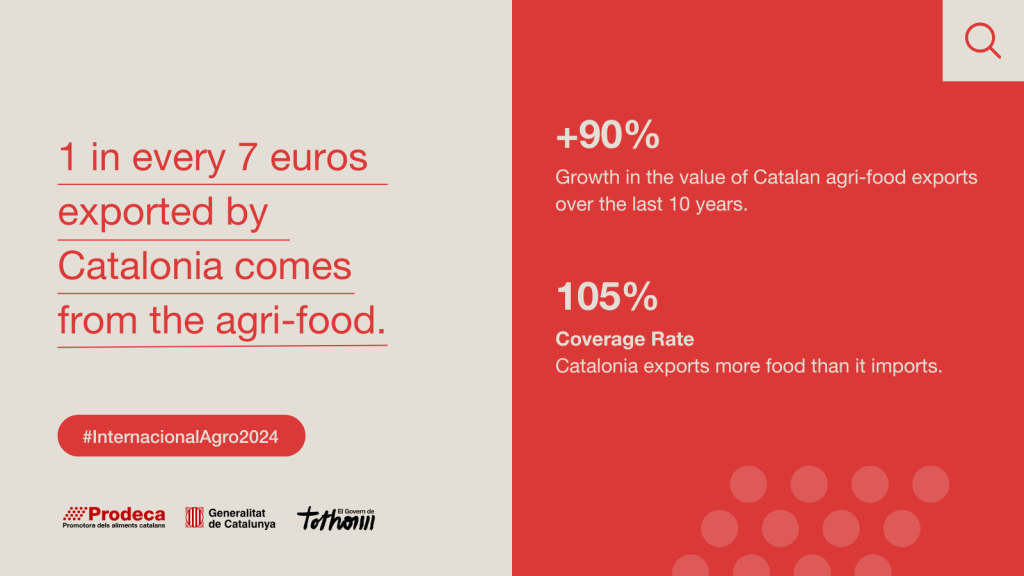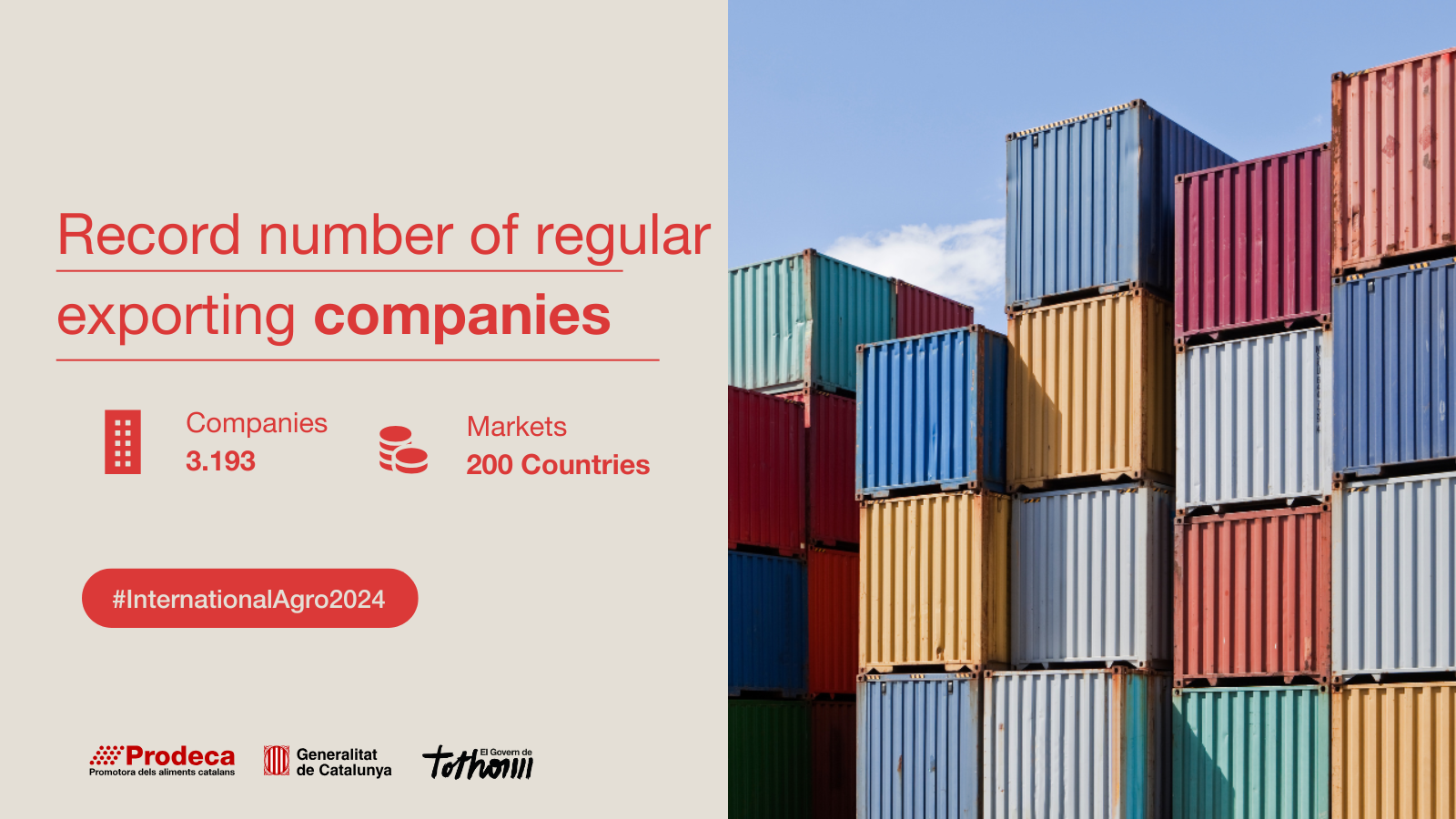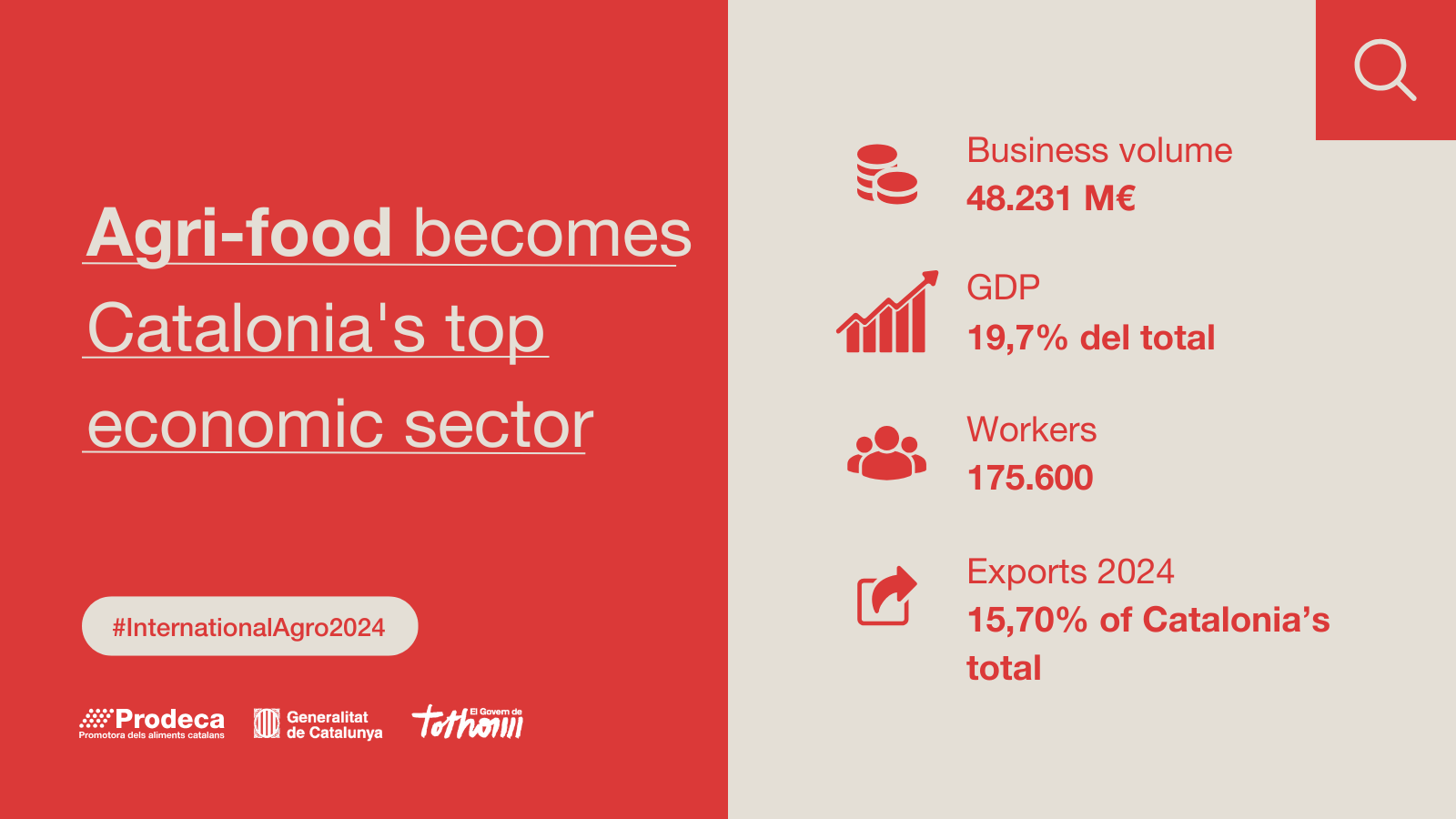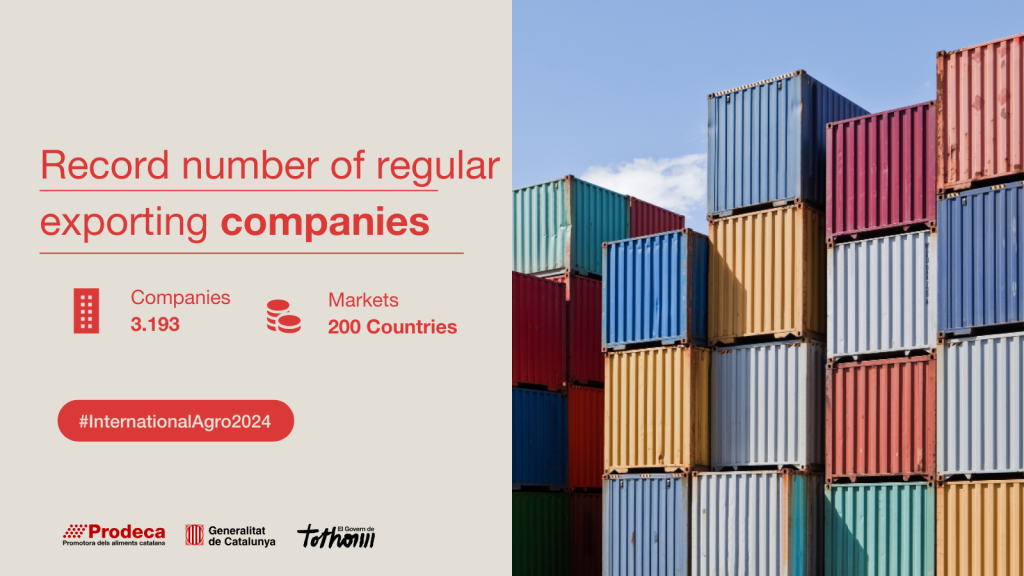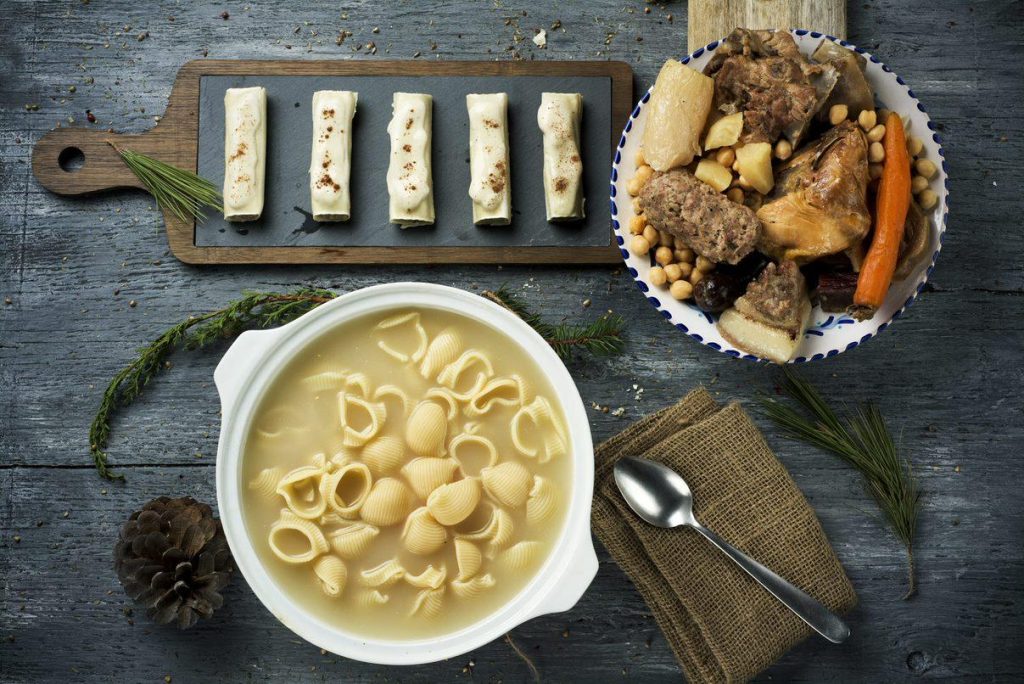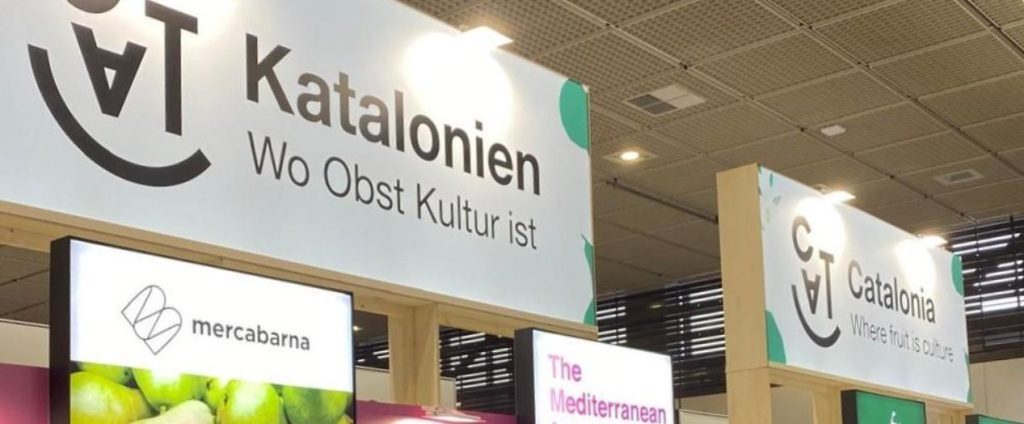The Catalan agri-food sector has achieved a new historic milestone in international trade, reaching €15.727 billion in 2024, marking a 2.61% increase in value compared to the previous year. This growth solidifies Catalonia as a key player in international markets, highlighting its ability to compete successfully in an increasingly demanding global context.
The results underscore the strategy of Catalan companies, which prioritize product value over volume. Over the past decade, Catalan agri-food exports have grown by 90% in value and 16% in volume, demonstrating the sector’s improved competitiveness and adaptability to the evolving demands of international consumers.
During a press conference, the Minister of Agriculture, Livestock, Fisheries, and Food, Òscar Ordeig, emphasized that “the agri-food sector remains one of the fundamental pillars of the Catalan economy. Currently, one-third of the sector’s turnover is generated through exports, underscoring its strategic importance for the country’s economy.”
Moreover, the sale of Catalan food products abroad has strengthened the global competitiveness of the Catalan economy, establishing it as one of the driving forces behind international growth. Agri-food exports from Catalonia are growing three percentage points above the average of all Catalan exports, contributing decisively to its position as the leading economic sector in the region.
Catalonia has also reinforced its weight in Spain’s foreign trade. Catalan agri-food exports account for nearly one out of every four euros (21.19%) of total exports from Spain.
Additionally, the agri-food sector remains the third-largest exporting sector, behind semi-manufactured goods and capital goods, narrowing the gap to just €108 million. Furthermore, one out of every seven euros exported by Catalonia comes from its agri-food sector (15.71%).
In terms of trade surplus, Catalonia maintains a coverage rate of 105% in 2024. This indicator reflects the sector’s strength, its ability to generate added value, and the growing competitiveness of Catalan companies on the international stage.
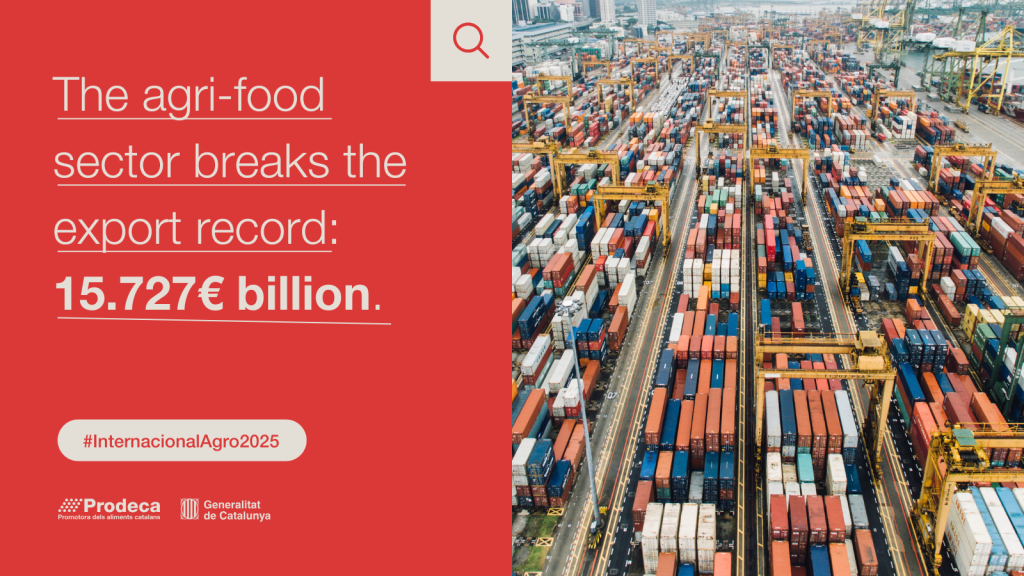
Record Number of Regular Exporting Companies
In 2024, a new record was set in the number of regular exporting companies, reaching a total of 3,193, representing an increase of 198 companies compared to the previous year (+6.6%).
More than 80% of these companies are SMEs, contributing 11% of Catalonia’s total exports. Catalonia continues to be a key driver in this area, as one out of every four agri-food exporting companies in Spain is Catalan (27.5%).
According to Dèlia Perpiñà, General Manager of Prodeca, “this increase in the number of exporting companies reflects not only greater export capacity but also the sustained growth of regular companies. These companies have found in exports a pathway to growth, resilience, dynamism, and competitiveness.”
Agri-Food Exports by Subsector
- Fine Food: This sector leads in export value, accounting for 33% of total exports. Growth is driven by increased international demand for high-quality products such as sweets, cocoa, coffee, infusions, snacks, and prepared meals. The sector has performed well across all markets, particularly in Europe (+10.85%), Asia (+11.35%), and North America (+9.32%). Only slight declines were recorded in the Middle East and Oceania.
- Meat: While remaining the largest sector by volume, it saw a -4.83% decrease in value. Reduced pork sales to China (-26.18%) had a significant impact, although beef sales surged (+32.17%), driven by recovery in the Algerian market (€49.46 million) and increased demand in European markets like Portugal (+15.80%) and Italy (+6.79%).
- Vegetable Oils: This sector grew by over 13% in value, with notable increases in olive oil exports to the United States (+104.19%), Italy (+60.42%), and Japan (+40%).
- Fruits and Vegetables: The sector maintained strong performance, with a 3.6% increase in value and a 5.76% rise in volume. Fruit exports grew significantly in Portugal (+40.06%) and the UK (+18.63%), while declining in Italy (-12.64%).
- Wine and Sparkling Wines: The sector experienced a slight -0.35% decline in value but achieved product revaluation with a 10.96% increase in average price per liter. Growth was notable in the US (+10.44%) and Canada (+7.36%), while sales declined in Germany (-36.51%) and Switzerland (-17.82%).
- Cereals and Milling: This sector saw declines in both volume (-11.32%) and value (-1.09%), due to reduced global demand and increasing competition.
- Fish and Seafood: The sector recorded a -6.03% decrease in value despite a 2.72% increase in volume. Exports grew in Portugal (+19.22%) and the US (+22.50%), but declined in Italy (-24.73%) and France (-11.92%).
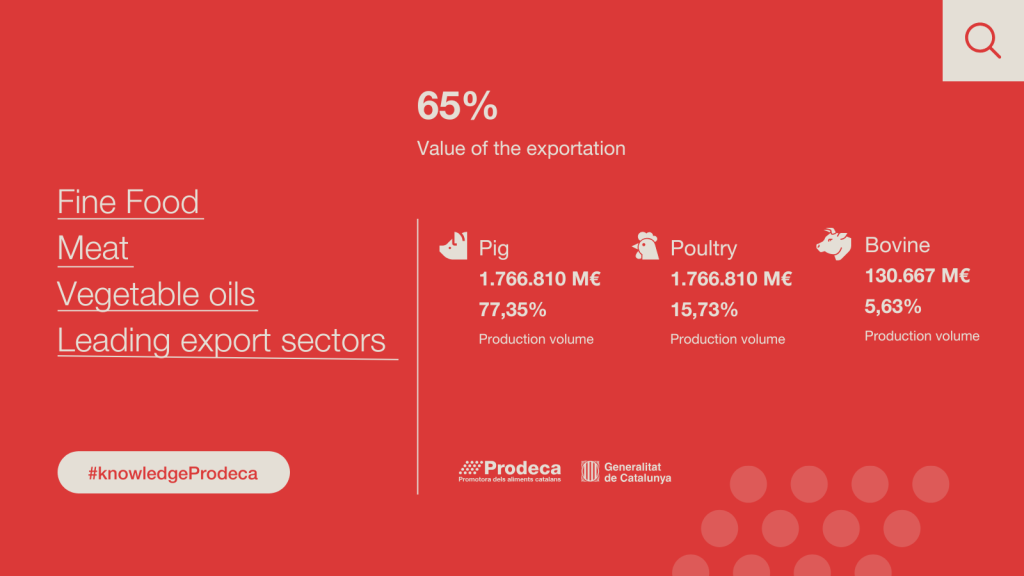
Focus on Stable Markets
Catalonia exports agri-food products to 200 countries, with significant growth in the European market, which has become a preferred destination for Catalan exports.
This trend began in 2023, with the EU now accounting for 63.66% of total exports, up from 55.85% in 2022. The Catalan agri-food sector has prioritized increasing its presence in stable and nearby markets, such as Europe, adapting to socio-economic and geopolitical changes.
Outside Europe, notable growth was recorded in North America (+22%), Latin America (+7.41%), and non-EU European countries (+10.42%), showcasing the sector’s ability to expand into new strategic territories.
